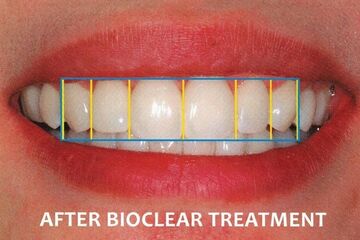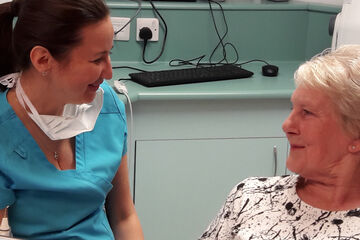The best toothbrush for the job depends on a variety of things that are unique to you.

Brushing your teeth is essential for good oral health.
When I ask patients about their brushing routines most of them tell me that they brush twice a day. That’s great! However it’s also important to know how to brush your teeth in order to remove all of the plaque.
Brushing teeth is an important job which requires skill and attention. For this reason, as a general rule, assume that your children can brush their teeth unsupervised when they are able to tie their own shoes.
The first important question to ask is what toothbrush should we use? With so many different brands and types of toothbrushes it can be difficult to know where to start. So which brush is best?
Let’s start by talking a bit about each type of toothbrush.
The manual toothbrush
The manual brush was the first toothbrush invented, all brushes developed since were based on the humble manual toothbrush. To achieve a good level of brushing, a manual brush should have a small head and soft bristles. Yes, a small head and soft bristles, not a big hard brush as my husband thinks! The soft bristles are more flexible and are able to reach the grooves and difficult areas of the tooth, such as the gum line. The small head is able to reach the back of the mouth much easier than a larger brush.
The traditional electric toothbrush
These were the first electric toothbrushes to come to the market, in the 1950’s. Since then, this advance in engineering has improved the brushing experience for millions of people. The round head cups on each tooth are more likely to reach the most difficult to brush areas such as the gum line. The brush head rotates and oscillates at a speed up to 48,800 movements/min depending on the model of the brush used. Most of these brushes will have a pressure detector, flashing a red light if you brush too hard. Paying attention to this will protect your gums. For the gadget-lover, the more modern brush is able to sync to your smartphone to give you direct feedback on your brushing performance, in detail.
The sonic brush
This design was first brought to market in 1992 under the Sonicare brand name and was launched by Philips. Sonic toothbrushes work just like ordinary ones: they move back and forth over the surface of your teeth at high speed, scrubbing away the plaque. They vibrate at a speed of up to 31,000 brush strokes (up and down) per minute. Philips claim that this extreme vibration creates a substantial amount of energy and motion, powering mouth fluids (saliva, water, toothpaste) into the areas between teeth and below the gum line.
Now, to return our original question: of the brushes available today, which of these brushes is the best one?
It really depends on how much attention you pay to your brushing and upon your technique. Using a manual brush requires a degree of skill and technique to do it right.
Taking this into consideration, an electric toothbrush is easier to use. Research has suggested that the round and oscillating head removes more plaque than the other toothbrushes, if used correctly.
Here are some useful tips:
* If using a manual brush or sonic brush, always hold your brush at a 45 degrees angle. - By doing this you are more likely to reach the gum line.
* If using an electric toothbrush, hold the brush on the tooth and let the brush do the job. With an electric toothbrush you brush one tooth at a time.
* Concentrate on brushing the inside of your lower front teeth as plaque tends to accumulate in this area.
* Remember to brush the back of the very back tooth.
* Toothbrushes don’t clean in between teeth, regardless of what the toothbrush advert says. Flossing or using interdental brushes in addition to brushing is essential to maintaining good oral health.
I hope to add a video here shortly to demonstrate how to brush the teeth using different types of toothbrushes.





